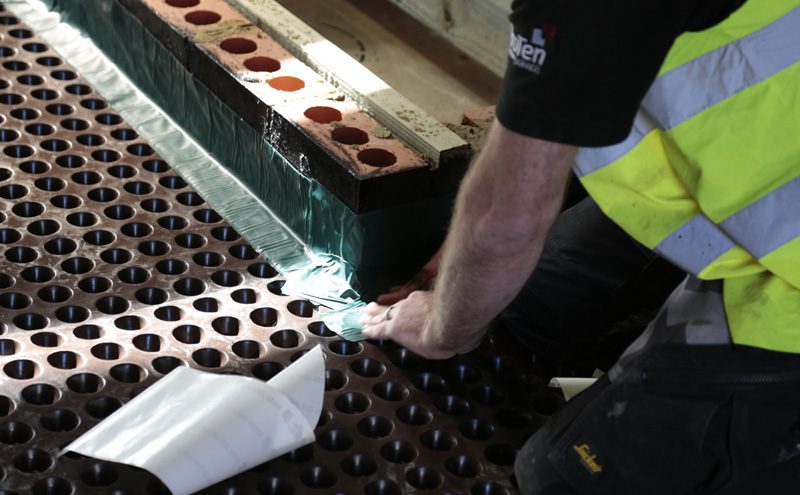
A flood-resilient prototype home has been launched to show the most effective ways to protect homes against flood damage and limit disruption.
Building science centre BRE has developed the ‘Resilient House’ to show how practical measures can be installed in a home to prevent flood water entering a property.
These include:
– Flood resistant doors and windows
– Water resilient walls and insulation
– A resilient kitchen with moveable kitchen units;
– Floor and wall membranes to channel water towards floor drains;
– An automatic sump pump that stops water rising through the floor and disperses water quickly should it get in
– One-way valves fitted to the toilets and sinks to prevent flooding via sewers
According to BRE, the measures on display offer the means to not only help prevent flood water entering a building, but also to aid rapid recovery after flooding – reducing the costs of repairs and helping people to get back on their feet quickly.
BRE Centre for Resilience Director Stephen Garvin said:
“It is not yet normal practice for properties in areas at high flood risk to be made more resilient following a flood. The aim of this project is to show contractors and householders in a tangible way that resilient repair isn’t as challenging or difficult as they may think it is.”
Floods Minister Thérèse Coffey said:
“BRE’s house shows how innovations in the construction industry can help people dramatically reduce the financial and emotional impacts of a flood.”
“We are investing a record £2.5 billion to better protect 300,000 properties from floods by 2021. But, if the worst happens, property resilience measures play a crucial role in limiting flood damage, so home and business owners can get back on their feet as quickly as possible.”
Emma Howard Boyd, Chair of the Environment Agency said:
“Property protection can be an invaluable defence when flooding occurs. There’s no doubt that it’s more cost-effective to make your home or business as resilient as possible rather than pay for the damage afterwards. I know the devastating impact that flooding can have and urge people to keep themselves safe and to adapt their homes so that they are able to recover as quickly as possible.”
Different types of water resilient insulation have been used in the house including injected cavity wall insulation, thermal board and PUR spray foam. Other practical issues have also been addressed, such as how to improve floor insulation, where to place electric sockets and home appliances and how to seal off areas where water could enter the property.
The project has been funded by the BRE Trust and partners AXA Insurance, British Damage Management Association, Cunningham Lindsey, Defra, Natural Cement Distribution, and Property Care Association.
BRE has also announced a new certification scheme and training courses aimed at property flood resilience surveyors that will provide then with a framework for achieving resilient repairs to homes and other types of property.
For further information and photos please contact ana.paun@bre.co.uk






